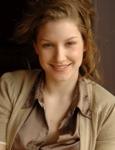
Friedrich Nietzsche once said, “many a man fails as an original thinker simply because his memory is too good.” Writer Amy Tan thinks about memory in a different way, noting that “memory feeds imagination.” These two viewpoints nicely illustrate the very different and extremely personal ways in which people approach and think about memory. And a new exhibition at the John Michael Kohler Arts Center (JMKAC), entitled Hiding Places: Memory in the Arts, explores these two—and other perspectives—on the sometimes-elusive topic of memory.
“Memory was a topic we felt was so broad and deep that it would be well suited to tackle as a Big Idea project,” says assistant curator Amy Chaloupka. She led the development of the project together with senior curator Leslie Umberger, Education/ Community Arts Department head Amy Horst, and performing arts manager Ann Brusky.
JMKAC director and Wisconsin Academy Fellow Ruth DeYoung Kohler notes: “Memory plays a powerful role in our lives. We admire a sharp memory and often equate it with intelligence itself, and we worry about forgetting even when remembering is painful. The need to share memories and to self-identify through them is central to human nature.” Established in Sheboygan in 1967, JMKAC is known for bringing together extraordinary works by emerging artists with those by renowned artists, and for providing innovative opportunities for visitors and community members to learn about and engage with art.
 Hiding Places: Memory in the Arts is one of JMKAC’s Big Idea projects, which means every facet of the organization is involved in an exploration of a particular topic or theme for up to six months. Unveiled every two or three years, these Big Idea projects utilize all of JMKAC’s twelve galleries as well as the grounds and other venues. They require a massive amount of work: articulating the project’s conceptual underpinning, conducting extensive research, commissioning new works, negotiating loans of dozens of works from museums and other lenders across the country, and developing a catalogue and a wide range of related written materials and programming.
Hiding Places: Memory in the Arts is one of JMKAC’s Big Idea projects, which means every facet of the organization is involved in an exploration of a particular topic or theme for up to six months. Unveiled every two or three years, these Big Idea projects utilize all of JMKAC’s twelve galleries as well as the grounds and other venues. They require a massive amount of work: articulating the project’s conceptual underpinning, conducting extensive research, commissioning new works, negotiating loans of dozens of works from museums and other lenders across the country, and developing a catalogue and a wide range of related written materials and programming.
Because of the magnitude of the topic, Chaloupka established four conceptual sections: From Memory, Holding Memory, Forget Memory, and Shared Memory. From Memory focuses on the work of artist savants as well as other artists who, although they do not have astonishing photographic memory, challenge themselves to expand their capacity to recall. Holding Memory plays on the long history of memory-holding objects, transforming the memento into a powerful vehicle for contemporary expression. In Forget Memory, artists and performers confront the stigmas, presumptions, and fears associated with Alzheimer’s and other forms of dementia by proposing new approaches emphasizing creativity and the imagination. And in Shared Memory, artists examine memories of collective experiences—on both sweeping and intimate scales.
For well over two years, the project team researched artists by digging through files, scouring books and magazines as well as online resources, viewing performances as far away as Seattle, hearing about artists on NPR, and traveling to international art fairs in the U.S.
 The result of such thorough work is an interdisciplinary project involving diverse artists with various backgrounds who work in a broad range of styles and mediums, all bringing their unique perspective on memory to Hiding Places. The works included are “finely crafted commemorative objects, video, and immersive environments, music, poetry, story telling, theatre, dance, and list-making,” says Chaloupka. “We felt it important to eradicate boundaries among the visual, performing, literary, and media arts in the same way that memory seeps into, infiltrates, and informs aspects of our lives everyday regardless of definitions, expectations, or boundaries.”
The result of such thorough work is an interdisciplinary project involving diverse artists with various backgrounds who work in a broad range of styles and mediums, all bringing their unique perspective on memory to Hiding Places. The works included are “finely crafted commemorative objects, video, and immersive environments, music, poetry, story telling, theatre, dance, and list-making,” says Chaloupka. “We felt it important to eradicate boundaries among the visual, performing, literary, and media arts in the same way that memory seeps into, infiltrates, and informs aspects of our lives everyday regardless of definitions, expectations, or boundaries.”
A fantastic 2,700 square-foot, multi-media installation will come to life in October when Pat Graney Company dancers and community members perform inside the installation. JMKAC also integrates several other collaborations between artists and community members into Hiding Places. For example, the November performance piece, They Like Me Around Here, is based on New York artist David Greenberger’s conversations with local elders and set to an original score by venerable Milwaukee musician Paul Cebar.
The companion catalogue for Hiding Places brings additional perspectives on memory with essays by three curators, an art historian, a veteran psychiatrist, and a playwright who is also nationally recognized for her work on memory loss, thus further encouraging an interdisciplinary approach to the topic and moving the conversation beyond the gallery space. Events like the ongoing monthly SPARK! program, which aims to “shift the focus from the deficiencies often associated with memory loss to the rich and satisfying experiences that are possible,” provide outlets for additional constituencies to engage with the exhibit in new and innovative ways.
By bringing together so many types of creators and thinkers, the new John Michael Kohler Arts Center exhibition seeks to address the question (as do Nietzsche and Tan): Does memory spur creativity or hinder it? Whatever answer you find, Hiding Places: Memory in the Arts will reshape and expand the ways in which you think about memory and its possibilities, limitations, even its construction and destruction.





